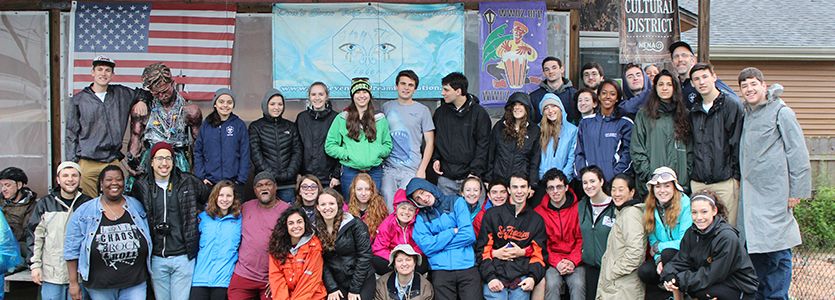Evan Wolkenstein, Director of Experiential Education; Jewish Studies Teacher
When my brother and I were young, we would sit on the carpet, watching cartoons, and during commercials, we’d sing a great song: “So, so, suck your toe.” My brother and I, 5 and 7 at the time, could actually fulfill the song’s commandment. Indeed, I am not flexible enough to do this today. My toe remains a very far-away, inaccessible peninsula of myself, though it does occasionally demand to be noticed, such as when I stub it on, say, a leftover box of matzo, on my way to bed.
In general, the big toe is a strange place on the body. It’s very…far away. Okay, try this: point to “you.” Where did you point? Your head? Your chest? Your heart? Wherever you pointed, the big toe is very far away from wherever “you” are, and yet, it’s part of your body.
With this in mind, I find it very strange that the big toe plays a very… big role in this week’s parsha, Tazria/Metzora. Tazria/Metzora is nothing if not interesting. It’s full of scaly nastiness and hairs and rashes and priests and blood. So interesting. So weird.
If you already know what Tsa’ra’at is, you can skip this paragraph! Tsa’ra’at is a bizarre skin curse. It attacks inanimate objects (clothes) and skin (weird blotches). Hundreds of years ago, unfortunately, it was translated into English as “leprosy.” Thanks to that, I have to tell students, over and over, that Israelites stricken by Tsa’ra’at didn’t lose limbs. They didn’t have Hansen’s disease. It wasn’t caused by Mycobacterium leprae. Rather, it appeared, it was treated by isolation and spiritual cleansing by a priest, and it was gone. Maybe it didn’t look so good, but it wasn’t life-threatening.
It is commonly known that Tsa’ra’at is the punishment for Lashon Ha’Ra, for Gossip. This has lead to a mountain of interpretations; many say that it’s the obvious punishment (or cure?) for gossip, since the offender becomes socially awkward, so to speak, and once in isolation, he or she can reflect on why not to talk smack about people behind their backs. The moral of the story, usually, is “don’t gossip, and feel fortunate that Tsa’ra’at doesn’t exist anymore.”
But…The Big Toe.
I’d agree with all this if not for the big toe. The cure for Tsa’ra’at involves the priest shmearing a bit of sacrificial blood on the ear of the person being cleansed, then the thumb of the right hand, then the big toe (Vayikra, 14:14).
Alright, I realize that there is a lot of weird going on. Skin curses are weird. Blood smearing is weird (though reminiscent of the Passover blood on the doorposts). But the weirdest thing is putting the blood on the big toe.
While I’m tempted to drash this out (the ear is shmeared to symbolize “not listening to gossip,” and the thumb is the symbolic part of the hand that gives us our human grasp) the Big Toe eludes me. The Big Toe escapes interpretation. That’s a funny image.
As it turns out, however, the Torah never says why people get Tsa’ra’at. Yes, Miriam gets it for talking lousily about her brother, Moses, but to assume that “correlation is causation” gets you in big trouble with the JCHS science department.
I’d like to suggest that while it’s meaningful to learn not to gossip, and indeed, the Rabbis turn to Tsa’ra’at as the Torah-motivator for teaching that lesson, we don’t really know why someone gets the nasty rash. Likewise, we don’t know why bad things happen to good people. That doesn’t mean we shouldn’t examine our actions and see if our behavior is bringing bad consequences into the world. We should examine our own actions. But it does mean that we should never see someone suffering and assume that they had it coming to them.
Likewise, why the Big Toe for the healing blood? It’s the symbol of that which you won’t understand. Indeed, apply the healing technology. Indeed, soothe the hurting. Indeed, do what it takes to help your neighbor through their difficult times.
But, as the Big Toe says, “Don’t assume it’s in your power to understand the cause of other people’s suffering.”









